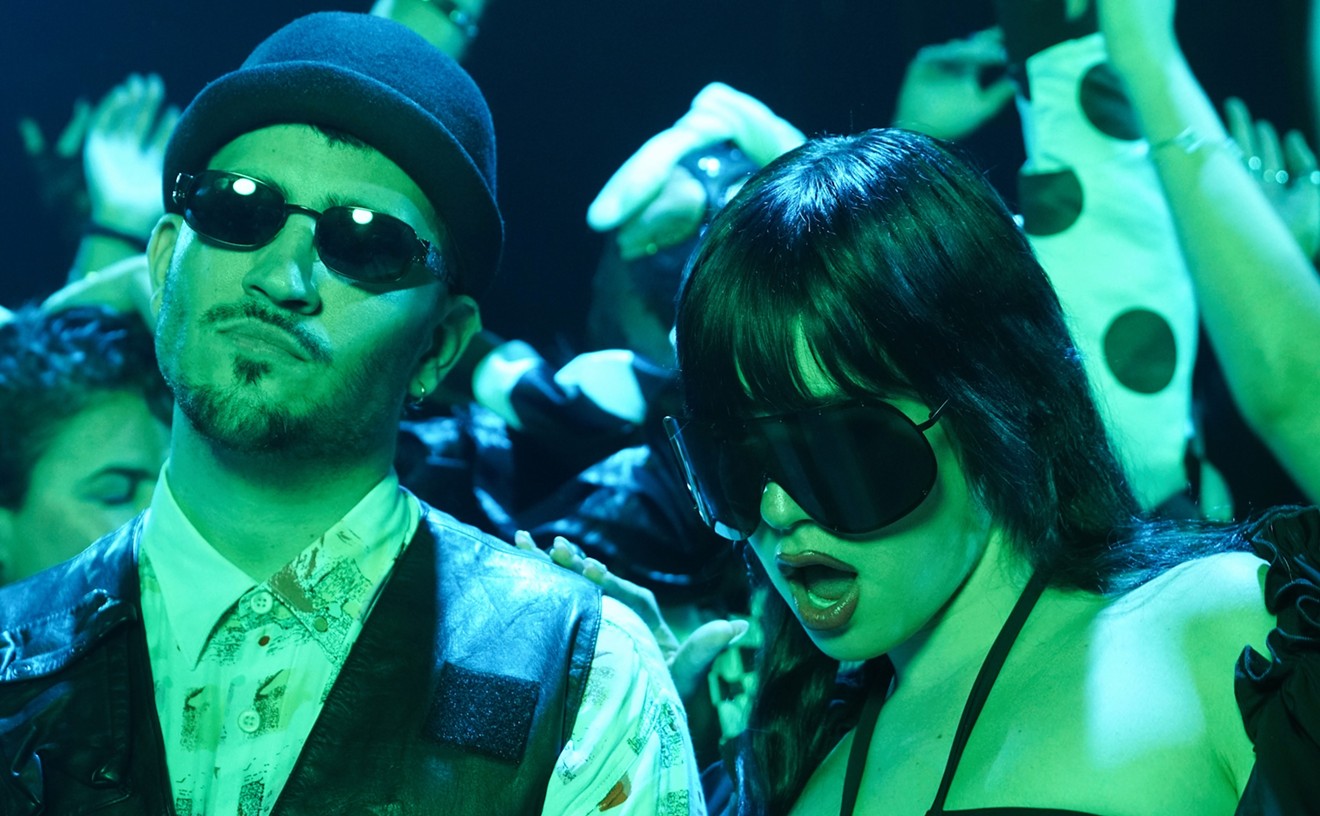Ancestral Reflections
(Metro Blue/Blue Note)
While Cuban pianist Frank Emilio hasn't benefited so far from the wave of international adulation that has swept other Cuban musicians, particularly pianists, into the limelight over the past few years, he's no less an integral part of the island's musical history than Ruben Gonzalez, Chucho Valdés, or Gonzalo Rubalcaba. Emilio, at age 78 a true elder statesman of the ivories, has been present in the evolution of modern Cuban music almost from the beginning. His new album, Ancestral Reflections, is such an intoxicating primer of classic Cuban musical styles, from charanga to danzón and mambo, that it's hard not to imagine the rest of the world finally being introduced to his genius through it.
A veteran of the Cuban music scene since the 1940s, Emilio was a cornerstone of the jam sessions held at the Club Cubano de Jazz in Havana during the late Fifties, and in the Sixties went on to found what would become the legendary jazz group Quinteto Cubana de Musica Moderna. This depth of experience is clear on Ancestral Reflections, a stately and masterful survey of classic Cuban music that evokes some of the elegance that marked Cachao's Master Sessions. That similarity isn't a coincidence, as Emilio includes a lush version of Cachao's "Juventud de Pueblo Nuevo" that shows off his deft command of a mambo-influenced soloing style.
As a pianist Emilio's phrases have some of the restrained elegance that marks Ruben Gonzalez's playing; this is clearly not someone who needs to impress with flashy technique. On the album's opener, "Sasaumo," Emilio quietly drops some gorgeously impressionistic chordal soloing over a swinging son backdrop for an effect that sounds akin to Ravel or Chopin gleefully vamping in Havana circa 1950. But his real gift is in orchestrating his formidable ensemble to such impressive effect while still allowing each soloist room to breathe. The entire ensemble -- two violins, wooden flute, bass, guiro, and percussion -- is capable of show-stopping theatrics the musicians are not afraid to display. Joaquin Olivero's flute soloing is dazzling, particularly on "Sasaumo" and "Bilongo"; José "Changuito" Quintana and Federico "Tata Guines" Soto engage in a heated timbales and conga duet on "La Conga Se Va"; and Enrique Lazanga's guiro solo on "El Arroyo que Murmura" is simply breathtaking. But the real joy here isn't in the individual soloists, as superlative as they are. Rather it's in the uncommonly masterful way Emilio binds them all together into one of the most satisfying albums of traditional Cuban music to come along in years. -- Ezra Gale
Television
The Blow-Up
(ROIR)
Its singer was kind of grating, his lyrics were often maddeningly obtuse, and the rhythm section wasn't much, but for a few brief years back in the Seventies, punk trailblazer Television was the greatest guitar band on the planet. Both Richard Lloyd and Tom Verlaine (said grating, obtuse singer/songwriter) were capable of onstage fireworks and explosions only hinted at on the group's first two albums (1977's Marquee Moon and 1978's Adventure). The Blow-Up, however, captures Television's gloriously cacophonous melange of primal garage rock and improvisational journeys into the avant-garde of punk rock.
Culled from the same 1978 shows that were bootlegged years ago under the title Arrow, The Blow-Up was first issued in 1982, four years after the band broke up, by the then-cassette-only label ROIR. Both the tape and its early Nineties CD release on Danceteria were marred by muddy fidelity that, bafflingly, was vastly inferior to the quality of Arrow. ROIR's latest version, though, finally gets it right: The remastering restores the power and ferocity of these scintillating performances, and if the work still sounds more than a little rough, it remains a stunning document of one of the Seventies' most important groups -- a group that spearheaded the underground scene at New York City's CBGB, paving the way for everyone from Patti Smith and the Ramones to Blondie and the Talking Heads.
Not that Television had much in common with their Bowery brethren. Although Verlaine and Patti Smith shared a taste for Bob Dylan, beat poetry, and egomania (it's no wonder the two were romantically linked for a while), Television favored long, winding songs during which Verlaine and Lloyd would skitter across the musical map. Throughout The Blow-Up you can hear the influence of John Coltrane, Ornette Coleman, and Jerry Garcia all duking it out in Verlaine's brutally majestic solos (e.g., "Marquee Moon" and "Little Johnny Jewel"), while Lloyd's more visceral playing was rooted in the primal verities of Keith Richards and Johnny Thunders (what he does here on "Satisfaction" is both beautiful and violent, full of melody and aggression). Meanwhile the rhythm section of drummer Billy Ficca and bassist Fred Smith crashed and bashed in a kind of sloppy unison, providing a semistable platform for the six-string calisthenics of Lloyd and Verlaine.
The Blow-Up is by no means a perfect album. Missed beats and blown notes abound, and Verlaine's vocals, which waver between tolerable and terrible, required the in-studio polish of a producer adept at hiding flaws and working around imperfections (something producer Andy Johns pulled off on Marquee Moon). Still, this ragged masterpiece offers the definitive portrait of Television: arty, raw, and chaotic, shivering with tension, and pulsating with the excitement and release of playing the absolute hell out of a guitar, very, very loudly. -- John Floyd










